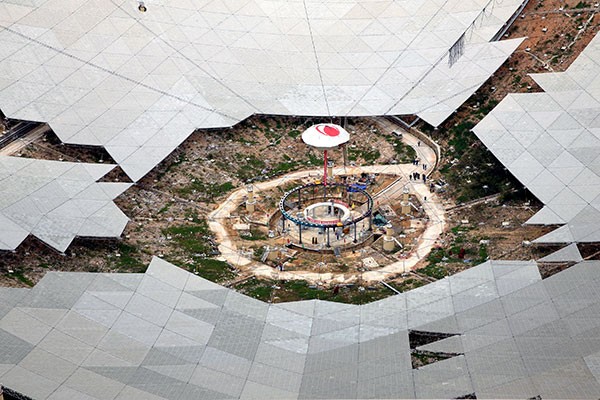China's gigantic radio telescope is one step closer to its completion. According to China Daily, scientists successfully tested the installation of the "retina," a key component that will allow the radio telescope to collect signals from outer space.
The retina weighs 30 metric tons and will be suspended 140 to 160 meters above a reflector dish.
Known as the Five-hundred-meter Aperture Spherical Telescope or FAST, the telescope will become the largest of its kind upon completion. The telescope will be 500 meters in diameter and will be composed of 4,500 panels that measure 11 meters.
The panels, which are mostly triangular, are crucial to the reflection of radio signals as they alter the shape of the antenna. Additionally, 4,350 of the telescope's panels can move up and down to allow FAST to rotate or reshape.
"With a larger signal receiving area and more flexibility, FAST will be able to scan two times more sky area than Arecibo, with three to five times higher sensitivity," said Li Di, chief scientist from the National Astronomical Observatories, in an interview with China Daily.
"So far, one of the most important steps has been completed. We will finish installing all the panels by June 2016, and strive to debug the whole system by the end of September," Li added.
How does FAST work? According to Li, it'll be like a television antenna placed on a roof. Because of its gargantuan size, however, "if you fill it with wine, every one of the world's seven billion people could get a share of about five bottles."
First proposed in 1993, FAST is one of the several competing concepts for Square Kilometer Array Project, which will pave the way for the construction of a next generation radio observatory.
"FAST's sensitivity and resolution will allow an extremely comprehensive study of thousands of galaxies in different environments in the local universe," said Lister Stavely-Smith, an astronomer from the University of Western Australia, in an email addressed to China Daily.




























